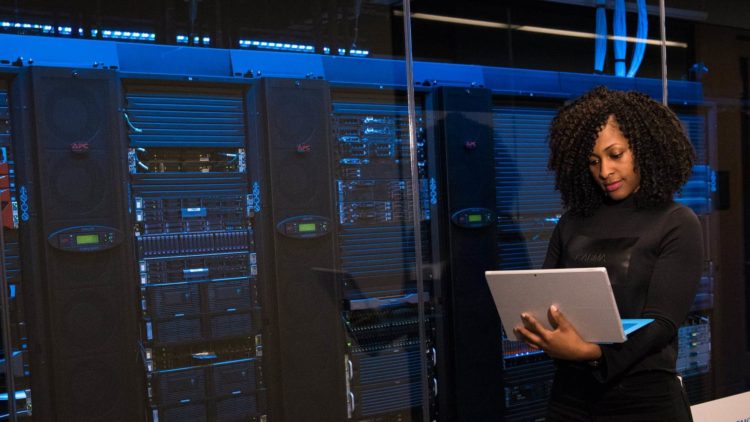As the world has responded to the COVID-19 pandemic, technology trends predicted at the start of this year have been overshadowed. In their place, a new set of trends is arising, with a clear focal point: the increased demand for IT services.
For example, our Asia Pacific Services business grew 1.2 times faster than the already-booming traditional PC hardware business last quarter. In Hong Kong, not only the tech sector but also the more conservative education and financial sectors are also looking for new ways to use IT services.
In fact, a wide range of IT services have already been employed by forward-looking companies that were ready to take advantage – so what has changed? The difference is a unique convergence of external forces, the particular stage of evolution of services-related technologies, and the development of modern IT service business models.
Services bring smarter technology to life
First: what do today’s IT services include? This can be a broad portfolio of solutions, based on deep and wide experience with customers in Hong Kong and globally, and the flexibility to bring hybrid teams together from across the company to create customised solutions.
Generally, we define IT services as attached, managed, or complex services. Attached Services and Software are sold with the device, and cover everything needed to keep the product running across its lifecycle.
With Managed Services and Device-as-a-Service (DaaS) solutions, customers outsource their IT infrastructure management to a service provider, and lease their hardware rather than purchasing it. Complex Solutions integrate hardware, software and services.
The one thing all of these services have in common is their ability to transcend the hardware they were designed for and deliver real and lasting results, outside of the technology, in the lives and businesses of its users, making them more productive, agile, and efficient.
The three trends driving the move towards using more services include both internal and external forces.
Trend 1: In-house IT is focusing more on core business
As businesses accelerate their digital transformation to meet the challenges of 2020, IT departments are under greater pressure to meet performance and operations expectations as well as security needs, with the mandate to keep costs down.
In turn, this drives IT departments to find a partner that specialises in the required services and to manage those services on the company’s behalf so that they can direct their attention to more transformative technology issues.
Rather than seeing this as simply outsourcing routine IT functions, organizations are looking for the value they can get from working closely with expert partners to craft tailored solutions that speak to their desired outcomes.
Additionally, the capital investment required to keep important IT infrastructure running on a daily basis can be significant, not to mention the personnel and skill requirements. To ensure greater IT cost predictability amid uncertain requirements, businesses are leveraging IT service experts to shift resources to core business and mission-critical applications.
Trend 2: More customised IT services are available to empower employees
The ongoing pandemic means that companies must be prepared for employees to work from home at short notice and be aware that their needs will vary and change. With smarter technology, companies can improve remote working arrangements and better secure the technology in place.
This can be done by enhancing the existing IT infrastructure, whether through the incorporation of cloud-based resources or other means, and making the necessary adjustments to ensure it remains viable and capable of coping with any future demands. But it can’t be a one size fits all approach; the solution must be tailored to each company’s needs.
It is important to ensure that all employees have the technology solutions they need—from the CEO to those packing products or delivering services. Everything from laptop power packs to monitors, VPNs and security will differ depending on the company, the services they already have in place and how their vendors and services teams are able to make things happen.
Working with a trusted IT partner and advisor should ensure a well-designed customised IT service solution that can help resolve problems and create IT infrastructure readiness.
Trend 3: Models that focus on increased flexibility and business resilience
For companies to build resilience, they need to anticipate, prevent and respond to adversity to ensure business continuity and long-term survival. Ideally, an IT partner should provide businesses with a flexible framework that helps them give their customers greater choice and seamless integration.
One case that illustrates this trend comes from Taiwan. A major food delivery platform had to rethink how it handled IT services, as it adapted to drastically increased demand during the pandemic. Hundreds of small restaurants, many of them with limited IT knowledge, quickly needed to go through a technical onboarding process including learning how to use tablets and connecting to the platform’s network.
Our solution including a full services package not only met this challenge, but ultimately reduced the waiting time for delivery pickup, increasing opportunities for deliverers and shortening the order-to-delivery time for consumers.
What’s next? As communities adapt to volatile conditions, one thing is clear: IT services are already driving intelligent transformation by making technology easy to scale, deploy and manage while delivering better user experiences. Expect to see more companies using IT services to create a more inclusive, trustworthy and sustainable digital society.





